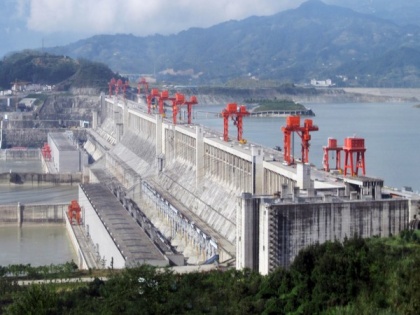China fails to tackle decade-long flooding problem, billions of dollars at stake
By ANI | Published: September 5, 2020 12:19 PM2020-09-05T12:19:58+5:302020-09-05T12:30:18+5:30
China has built many reservoirs, levees, dikes and dams on its seven major river systems over the last several years but is still struggling with a surge in crippling floods, which has destroyed huge swathes of agricultural and industrial land and millions of homes.

China fails to tackle decade-long flooding problem, billions of dollars at stake
China has built many reservoirs, levees, dikes and dams on its seven major river systems over the last several years but is still struggling with a surge in crippling floods, which has destroyed huge swathes of agricultural and industrial land and millions of homes.
Since 1950, China has witnessed three of the world's 10 most destructive floods. Flooding in cities is a worrying trend and getting worse, a sign of rising populations and failure to execute urbsation policies, Bloomberg reported.
Last month, flooding in the Three Gorges Dam, the world's largest hydroelectric dam, on the Yangtze River peaked and officials feared it could overflow. Authorities elsewhere have blown up barriers that were creating more damage than help.
Over 40 per cent of China's population lives in the Yangtze River Economic Belt and accounts for nearly 50 per cent of export value and 45 per cent of Gross Domestic Product (GDP), according to China Water Risk, a research firm based in Hong Kong. The region, if taken as an independent entity, could be the third-largest economy in the world.
With the threat of severe disasters looming, a hydroclimatologist named Peter Gleick, a member of the US National Academy of Sciences, told the South China Morning Post that climate change is increasing the risks of extreme rainfall events, making it "even more likely that dams like the Three Gorges will be unable to prevent the worst flooding from occurring in the future."
If temperatures rise by 2 degrees Celsius, flows around Yangtze and other major rivers across the world will intensify, leading to a rise in the frequency of heavy flooding, according to a study.
A study using a rainfall record of over two periods between 1961 to 2010 found that heavy rain days are more frequent and intense in cities compared to suburban areas along the Yangtze River. On average, such days see an increase by 30 per cent in places like Suzhou, near Shanghai, known for wedding gowns, bridal exports and big tech factories, according to Bloomberg.
Last year, China pumped in 726 billion yuan in water conservancy conservation, which is the highest in history, according to CLSA Securities Ltd. Since the beginning of monsoon, flood management has been allocated 1.2 billion yuan in central government funds. But apart from this, trillions of yuan are being spent on COVID-19 recovery programmes, which also includes constructing a massive 5G capacity infrastructure to ensure future manufacturing capabilities.
It is true that climate change does increase the risk of huge floods. In the heavily industrialised Guangdong province, losses due to floods totalled around 30 billion yuan in 2015.
"Beijing's ministries have issued streams of climate change-related rules and targets, and China was at one point considered a leader. Constrained coffers, the viral outbreak, trade war with the US, and slowing economic growth will make it harder to put future floods and the like front of mind. That needs a rethink," according to the article in Bloomberg.
Insurance compes in China are still not prepared and risk-modelling on flood events has been more difficult. In 2016, non-life insurers in the country suffered losses amounting to over 4 billion yuan due to floods and storms between June and August.
Analysts of Fitch Ratings Inc, expect claim "to continue to surge as the rainy season is not over yet in certain parts of China."
They said insurers in Hubei, Guangxi and Jiangxi provinces on July 15 had incurred losses of over 500 million yuan of a week earlier, including claims from agricultural, motor and property insurance.
( With inputs from ANI )
Disclaimer: This post has been auto-published from an agency feed without any modifications to the text and has not been reviewed by an editor
Open in app